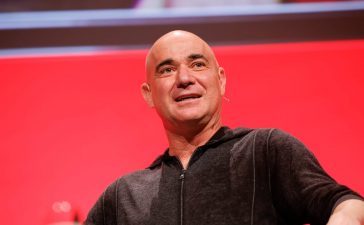Simpson33 | Istock | Getty Images
The decline of traditional TV continues, even as the prices of streaming services rise.
Total traditional TV usage, comprised of broadcast and pay TV, dropped below 50% in July for the first time ever, according to Nielsen’s monthly streaming report, The Gauge.
Usage among pay-TV customers fell to 29.6% of TV, while broadcast dropped to a 20% share during the month. Streaming made up nearly 39% of usage in July, the largest share reported since Nielsen’s first time reporting the monthly numbers in The Gauge in June 2021.
Pay TV has steadily declined as consumers cut traditional bundles and opt for streaming. The rate of that drop-off has only accelerated since the beginning of the Covid-19 pandemic, when streaming usage surged.
Major pay-TV providers, such as Comcast Corp. and Charter Communications, often report quarterly drops in customers. Comcast and Charter lost 543,000 and 200,000 pay-TV subscribers during the second quarter, respectively.
“We think the metrics for linear TV are all bad,” Tim Nollen, a Macquarie senior media tech analyst, said in a recent report.
Pay-TV operators reported a weighted average 9.6% decline in subscribers year over year — losses that amount to about 4.4 million households — and pricing “does not drive upside,” according to Macquarie’s report.
The overall number of pay-TV households has steadily declined. There were 41 million pay-TV households during the second quarter, down from 50 million and 45 million in the same periods in 2021 and 2022, respectively, according to Macquarie.
Year-over-year, pay-TV viewership was down 12.5%, while broadcast was down 5.4%, according to Nielsen.
The rise of streaming services, from Netflix to Disney‘s Disney+, Hulu and ESPN+ to Warner Bros. Discovery‘s Max often take the blame. But many of these operators, including Disney, Warner Bros. Discovery and Comcast, are fighting to gain share and bring in profits from streaming while their pay-TV channels and businesses deteriorate.
Although viewers are turning more to streaming, subscriber growth for those platforms has slowed, especially for larger services such as Netflix and Disney+. Fledgling apps such as Paramount‘s Paramount+ and Comcast’s Peacock have seen more member growth but have smaller subscriber bases.
Streaming companies have turned from using subscriber growth as a measure of success, and instead are pushing to reach profitability in the segment as the traditional TV business shrinks.
Many consumers left the traditional TV bundle due to its steep prices. Now, streamers are also raising prices across the board — including Disney for ad-free Disney+ and Hulu subscriptions — in a bid to boost revenue.
Lackluster streaming subscriber growth hasn’t helped much in their bid for profitability, Macquarie noted in its report.
Patrick J. Adams as Mike Ross on “Suits.”
Shane Mahood | USA Network | NBC Universal | Getty Images
Advertising is playing a bigger role in driving revenue and companies are looking to crack down on password sharing. Cutting content expenses, especially for original programming, has also been a big part of the cost-cutting strategy.
The move away from originals comes as licensed programming, especially from traditional outlets, is often some of the most-watched content.
For Netflix, a recent hit has been “Suits,” the series that originally aired on NBCUniversal’s cable channel USA Network. The show that co-stars Meghan Markle was previously only streaming on Peacock. The series looks to have driven streaming viewership on Netflix, as well as Peacock, accounting for 18 billion viewing minutes in July, according to Nielsen.
Netflix viewership rose 4.2% during the month, bringing streamers to 8.5% of total TV usage. Behind it followed Hulu, Amazon’s Prime Video and Disney+, which likely got a boost from the kids cartoon, “Bluey,” another licensed program rather than an original.












